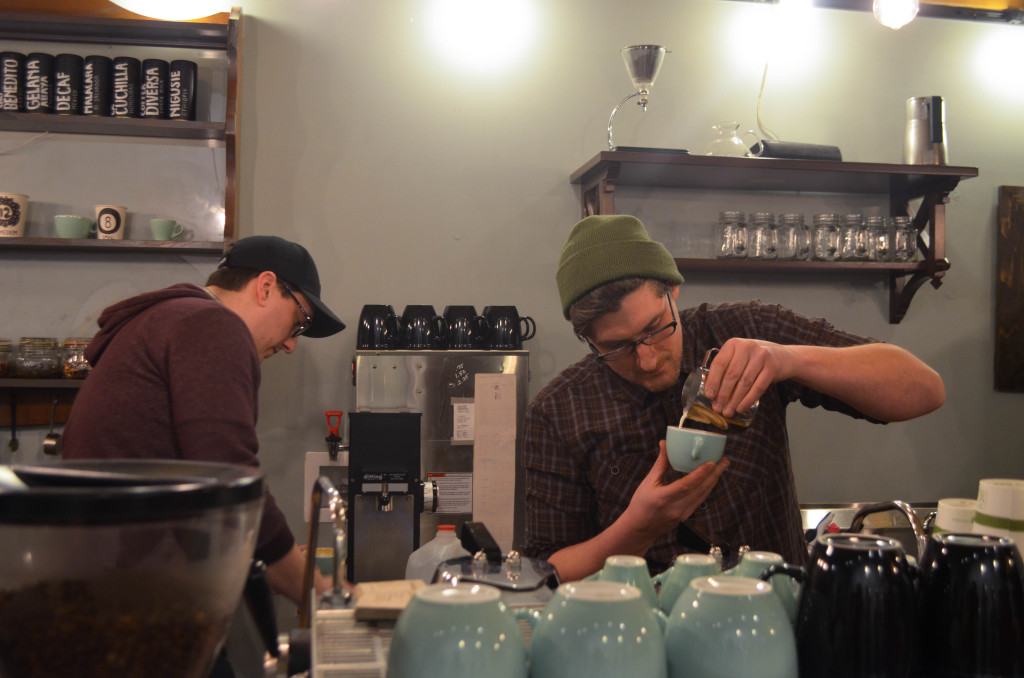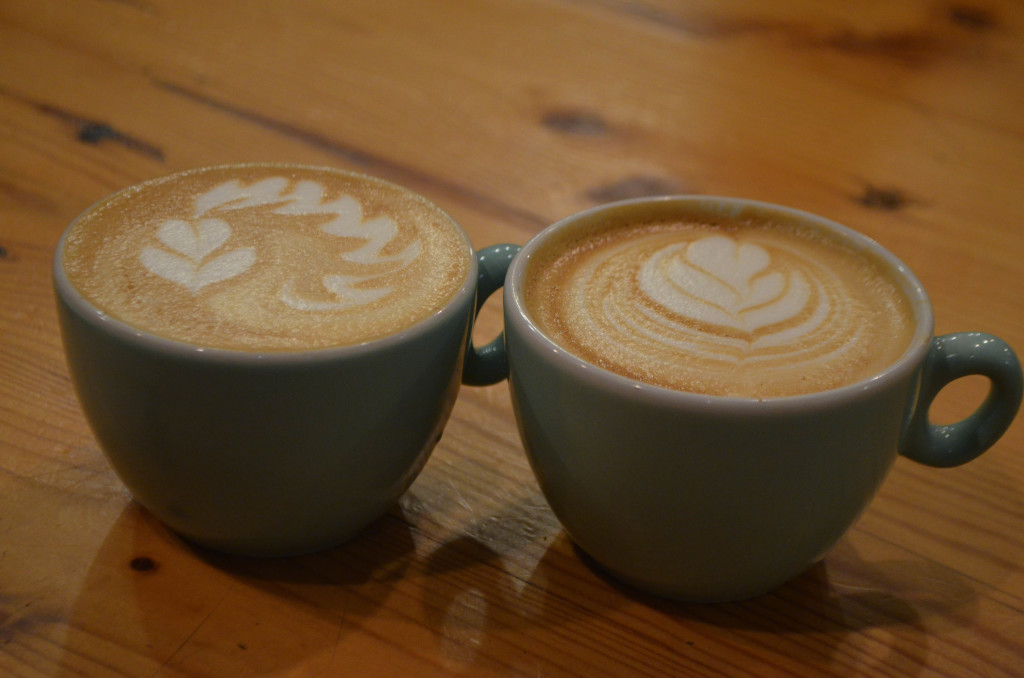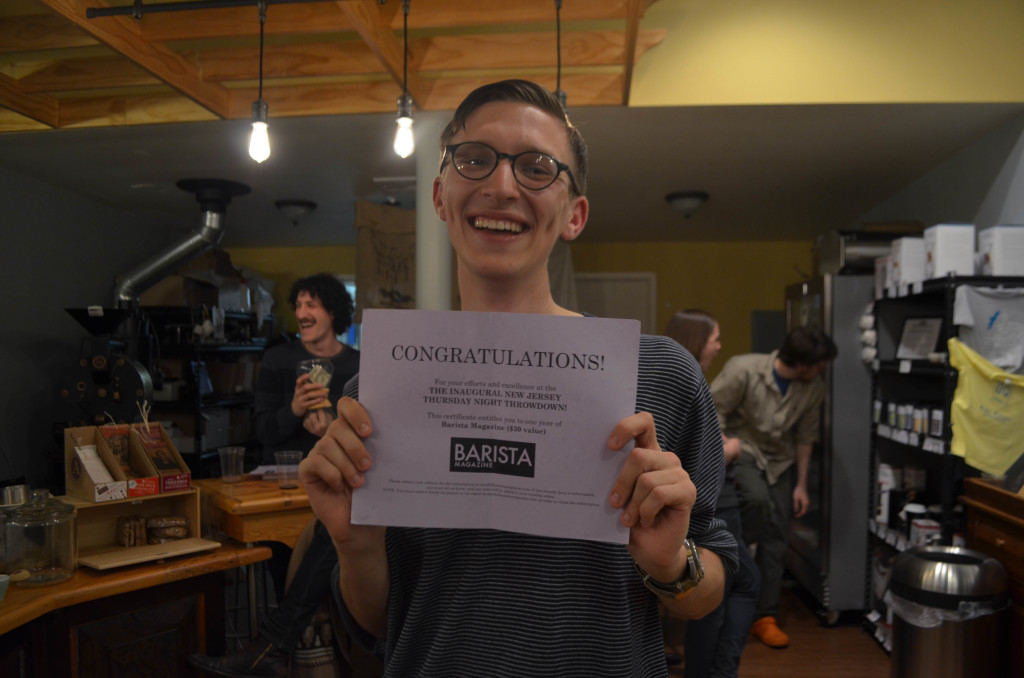All of us coffee drinkers have consumed countless lattes with designs in our foam, but it takes a true coffee aficionado to pause and fully consider the quality of the design. After all, most mornings my policy is: let me consume my caffeine quickly or I will cause you pain.
The baristas who make our drinks, however, not only think about their designs, but they also compete with them. In cities across the country, coffee shop employees open doors to their brethren after closing hours and test their milk-pouring skill over good music and craft beer.
This past Thursday, I acted as anthropologist and crashed the “Thursday Night Throwdown”, New Jersey’s first ever latte art competition hosted at OQ Coffee Co. in New Brunswick, NJ.
The participants were employees from a variety of NJ cafés: OQ, Rojos Roastery, Modcup, Booskerdoo, and Café Volan. Most wore plaid and had tattoos or glasses (sometimes both), blending in well with the OQ’s wood finishing, exposed light bulbs, and Chemex stations. Very possibly, the event had the highest per-capita facial hair outside of Portland.
I did more than just confirm hipster stereotypes, though. In case you ever find yourself in your own latte art competition, here are three absolutely essential things to know.

Photo by Lara Norgaard
1. The Rules
Each pair of baristas in the competition bracket pulls a shot and pours a latte or cappuccino (with regular milk, of course). Both drinks are placed in front of three judges who have less than 30 seconds to select their favorite cup. The winners advance, and the losers grab a beer and watch the rest of the bracket.
Sadly, every round of drinks are poured out – no one comes with the goal of actually drinking coffee (but maybe that’s because baristas have unlimited caffeine access all day at work).

Photo by Lara Norgaard
2. Be Bold
Yes, skill and precision are important. However in the OQ competition, as long as technique was comparable during each round of drinks the judges went with the riskier design. Every time.
Now you know to be extra impressed when a barista puts in the energy to serve you a hanging heart in your foam.

Photo by Lara Norgaard
3. It’s Harder Than it Looks
Just observing the competitors shows how the technical prowess behind these designs should not be overlooked. A second too long in pouring the milk or a slightly shaking hand will make crooked your otherwise perfect leaf. Great baristas train for months learning more than just about coffee – it’s a full course on dairy products as well.
Career change? I’m definitely considering it (and so are you). Just save me those leftover lattes this time.


